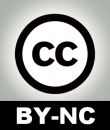May 6, 2025 Project Liberty Newsletter
For & Against
The current regulation-innovation debate is not new. It’s a dynamic that has shown up in various industries and markets worldwide. Here are a few examples of the relationship between regulation-innovation:
- Regulation can hinder: In most countries, regulations vary based on firm size. The bigger the company, the greater the regulation. Researchers found that companies in France that were nearing a 50-employee size (a headcount threshold that leads to greater labor regulations) innovated less.
- Regulation can enable: Section 230 in the U.S. gave online platforms legal immunity for user content moderation. This protection allowed countless online business models to flourish and is credited with helping create today’s internet (for better and worse).
- Regulation can hinder: America’s Nuclear Regulatory Commission has been recently criticized for regulatory overreach. Those who see nuclear energy as necessary to build a clean-energy economy believe “crushing regulation” has made it virtually impossible for new nuclear reactors to be built in the U.S. (Only three new reactors have been completed in nearly three decades, reflecting widespread criticism of regulatory overreach.)
- Regulation can enable: Antitrust regulation to break up monopolies has created a level playing field upon which new technologies could emerge. Two separate antitrust lawsuits against IBM in 1969 and AT&T in 1974 helped create the conditions for Microsoft and Apple to launch the personal computer revolution.
There are countless other examples highlighting the complex relationship between regulation and innovation, from net neutrality laws in the U.S. to environmental rules that incentivized the formation of new industries like carbon capture, to government regulation that contributed to a boom in domestic manufacturing (in the case of China’s electric vehicle sector).

